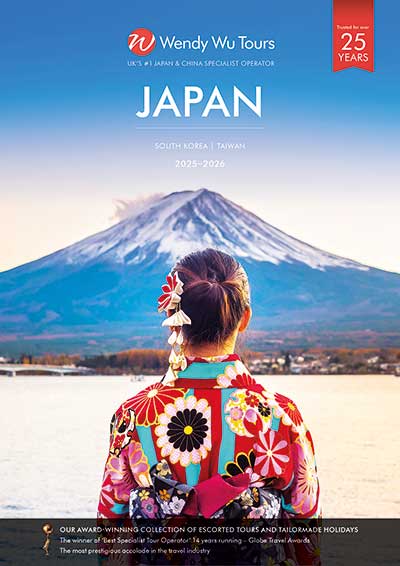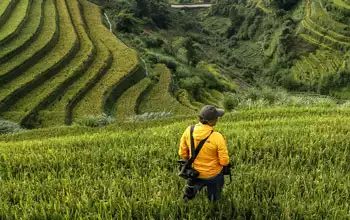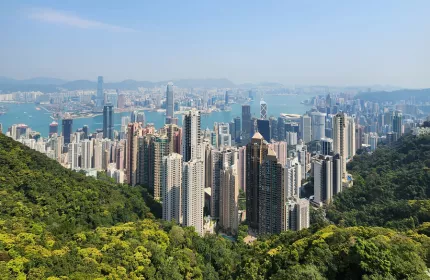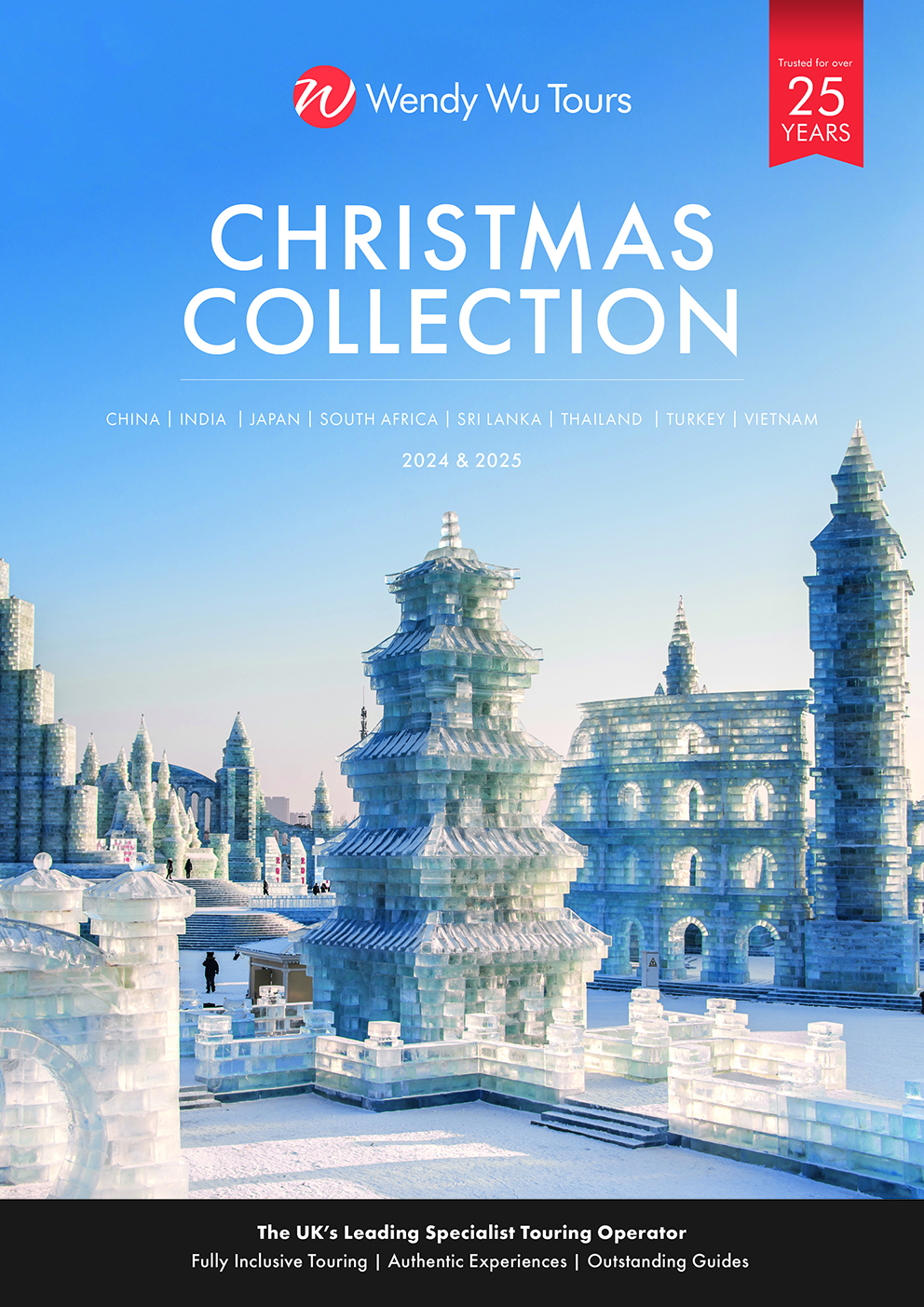Japan’s location between mainland Asia and the Pacific brings with it distinctive seasonal changes. The most famous being springtime with its famous cherry blossoms and their renowned soft pink hues.
However, as summer gives way to autumn, the transition brings with it a new and equally impressive palette of vivid reds, golds and oranges. Beginning in Hokkaido in late September, the cooling weather and shorter days prompt the turning of the leaves across Japan’s deciduous trees. By mid-November, the vivid display reaches Kyoto and Tokyo before continuing south into early December.
This vibrant spectacle is also more predictable, and less fleeting, than cherry blossom season. The display lasts around two months and can be seen across the entire country.
Momijigari
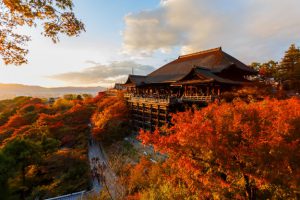
In Japan, the arrival of autumn also means that it’s time for momijigari, which translates as ‘maple leaf hunting’. This tradition usually involves walking with family and friends through the forests and fields, searching for the most striking autumn colours.
Although the word ‘momiji’ refers to maple leaves, there are many more tree species involved in this cataclysm of colour. Over 70% of Japan’s forests are made up of deciduous trees, including Japanese maple trees, wax trees, rowan, burning bush, Japanese sumac and many more. There are also the aki no nanakusa, or the seven known flowers and grasses that herald the season’s arrival. All of this cumulates in a spectacular display of warm and vibrant autumn colours spread over mountains, across forests and through tree-lined streets.
How to momijigari like a local
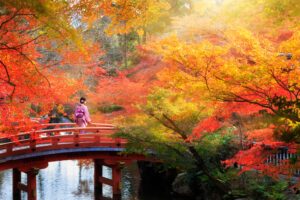
It’s one thing to admire the beautiful autumn leaves in passing, and another to really immerse yourself in the spirit of momijigari. It goes without saying that getting out in nature is really the only way to really experience the vivid colours of the season. But what really makes the difference is the pace of your exploration.
During momijigari, you are encouraged to slow down and look closely. Take time to really observe the delicate tracery of lines on a mottled cherry blossom leaf or the contrast of the red maple leaves that have fallen on yellowing moss below.
Autumnal food
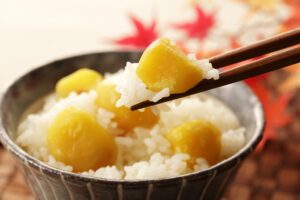
As the Japanese say goodbye to lighter summer meals, shokuyoku, or ‘the season of hearty appetites’ is welcomed in. With the fish having been fattened up over the summer, autumn seafood is now at its best. A sweet, fatty fish known as sanma, which translates as ‘autumn knife fish’, is now in season and ready to be enjoyed dipped in salt and smoked over a barbeque.
Many traditional fruits and vegetables are also harvested in autumn, including daikon. This is a long white vegetable that comes from the same family as the radish and can be found in salads or pickled as a condiment. Mushrooms, sweet potatoes and the vivid orange persimmon are also popular ingredients at this time of year.
Arguably the most traditional autumnal food is kuri (fresh chestnuts). A Japanese favourite since prehistoric times, they’re usually enjoyed roasted or pureed as a sweet filling. Kuri rice is a popular savoury dish during autumn.
Autumn festivals and events
The darker evenings and cool weather at this time of year make autumn an ideal time for traditional festivals and events. Regardless of where you’re travelling, you’re sure to encounter numerous festivals showcasing centuries of rich history and traditions.
Tsukimi
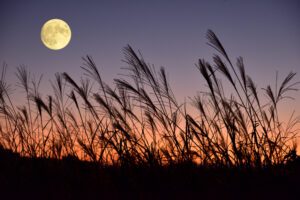
The Japanese consider the harvest moon the most beautiful lunar appearance of the year. Traditionally the pastime of tsukimi was a way of expressing gratitude for a good harvest and encouraging successful yields in the following years. At this time people will congregate in parks, temples and riverbanks to admire the brightest moon of the year. Small white dumplings of rice flour, called tsukimi dango are served as offerings to the moon and eaten afterwards.
Winter illuminations
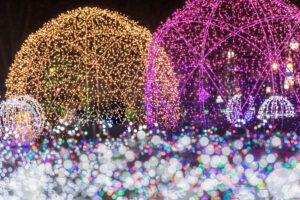
As the days become shorter, dazzling illuminations can be seen popping up in towns and cities across Japan. They do get busier towards the Christmas and New Year season, with many of the less crowded events taking place in November. Bigger cities like Tokyo and Kyoto will have large, dedicated areas where they exhibit extensive illumination displays.
Japanese Gardens
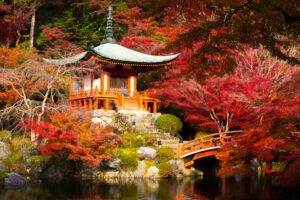
Traditional Japanese gardens, found all over Japan, are some of the best places to enjoy the colourful tones of autumn. The unique fusion of fall colours and Japanese garden zen can only be experienced at this time of year. Many gardens will host dedicated illumination events in the evenings.
Seasonal advice
Although you’ll find that Japan in autumn is less busy than visiting the cherry blossoms in spring, it is still the second busiest time of year to travel. With that in mind, it’s worth booking your Japan tour as far in advance as possible to ensure that you don’t miss out on this very special season.

Japan Uncovered
17 days from £6790pp
Fully Inclusive of Tour & Flights
Mount Fuji - Hiroshima & Miyajima - Snow Monkeys - Japanese Alps - Neon Tokyo
